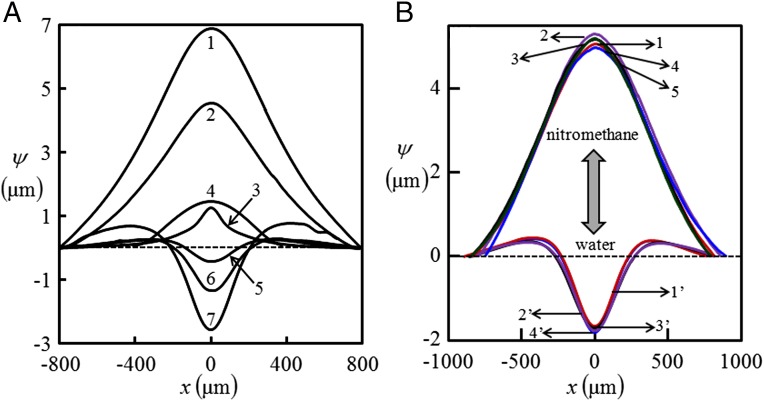Fig. 2.
Bulging profile of thin skin of an elastic film embedded with liquid-filled channels. (A) Curves 1–7 represent liquids: (1) acetonitrile (filled-in channel of diameter µm, embedded in film of thickness µm and minimum skin thickness, µm); (2) nitromethane ( µm, µm, and µm); (3) DMSO ( µm, µm, and µm); (4) perflurooctane, ( µm, µm, and µm); (5 and 6) ethylene glycol, air ( µm, µm, and µm); and (7) water ( µm, µm, and µm), respectively. (B) Two liquids are injected alternatively into the channel. Bulging deflection of the channel skin flips from 1 to 1′ as nitromethane, initially present in the channel, is replaced by injecting water into it. The profile flips back to 2 as water is similarly replaced by nitromethane. This process is repeated 4–5 times, without any signature of irreversibility or hysteresis. A film embedded with channel of diameter µm and minimum skin thickness µm is used in this experiment.

